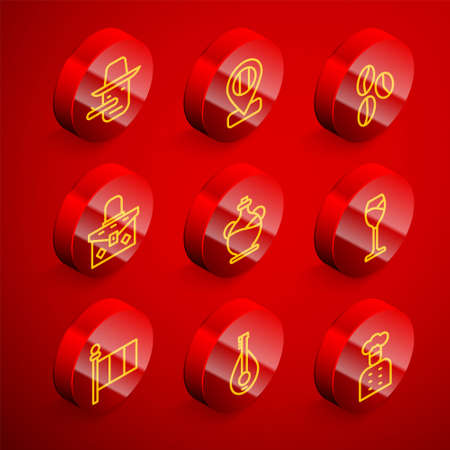Introduction: Celestial Symbols in British Satire
Throughout the rich tapestry of British literature, astrology has consistently served as a powerful literary motif—especially within the realm of political satire. The enduring fascination with stars, planets, and their supposed influences on human affairs finds an especially receptive audience in Britain, where wit, irony, and scepticism are cultural hallmarks. This introduction explores why British writers have long looked to the heavens for metaphors to comment on earthly power struggles, and how these celestial symbols continue to resonate with readers today. By weaving astrological imagery into satire, authors not only lampoon the unpredictability and folly of political figures but also invite audiences to reflect on fate, destiny, and the sometimes arbitrary nature of authority. In this context, astrology becomes more than mere superstition; it is transformed into a subtle language of critique that bridges tradition with contemporary issues, offering both entertainment and incisive commentary for a discerning British public.
Historical Roots: Astrology in Early British Political Satires
Astrology, with its rich tapestry of celestial imagery and cosmic symbolism, found fertile ground in early British political satires. During the 16th and 17th centuries—a period marked by political upheaval and shifting power dynamics—writers often turned to the stars and planets as metaphorical devices to both veil and sharpen their social commentary. In these works, astrological language became a powerful tool for critiquing authority figures, exposing corruption, and questioning the legitimacy of societal structures. Rather than directly challenging rulers, satirists could employ the movements of Mars, Jupiter, or Saturn to represent leaders’ ambitions or shortcomings. This not only offered a measure of protection from censorship but also engaged readers in deciphering layered meanings, much like interpreting an astrological chart.
Satirical texts would frequently attribute the rise and fall of politicians to planetary alignments or blame poor governance on unfavourable conjunctions. For example, a monarch’s arbitrary decisions might be likened to Mercury in retrograde—suggesting confusion and miscommunication at the highest levels. Meanwhile, court scandals could be depicted as eclipses that momentarily darken the realm. Such metaphors resonated with audiences who were accustomed to reading almanacs and horoscopes, embedding political critique within familiar cultural frameworks.
Common Astrological Motifs in Early British Satire
| Celestial Body | Symbolic Meaning | Political Application |
|---|---|---|
| Sun | Power, Authority | Kingship; centralised rule; leadership qualities |
| Moon | Changeability, Fickleness | Unstable policies; shifting allegiances among politicians |
| Mars | Aggression, Conflict | Military ventures; political infighting; ambition gone awry |
| Saturn | Restriction, Decay | Bureaucratic stagnation; oppressive laws; ageing regimes |
| Mercury | Communication, Trickery | Diplomatic manoeuvring; propaganda; deception in court politics |
The Role of Almanacs and Horoscopes in Public Discourse
The widespread circulation of almanacs and horoscopes during this era amplified the impact of astrological motifs in satire. These publications provided ordinary Britons with a shared language for discussing fate, fortune, and national destiny. When satirists referenced a disastrous “Jupiter-Saturn conjunction” or predicted chaos under a “misaligned Mercury,” they tapped into popular anxieties about governance and change. By embedding critiques within such cosmic frameworks, writers ensured their messages were both accessible and subversive—challenging power without inviting direct reprisal.

3. Power and Fate: The Role of Celestial Imagery in Shaping Political Narratives
Astrological language has long held a unique sway over the British political imagination, subtly shaping public perceptions of power, destiny, and leadership. Politicians and satirists alike have often turned to the language of stars and planets to frame narratives about those in authority. By drawing upon celestial imagery, writers can both elevate and undermine political figures—suggesting that their rise or fall is determined by forces greater than mere human ambition. In classic British satires, leaders are frequently cast as being born under a lucky star or, conversely, cursed by ill-fated constellations. Such expressions tap into the collective yearning for meaning in political events, encouraging the public to interpret leadership successes or failures as part of a grand cosmic design rather than random chance or personal merit.
This motif is especially resonant in times of uncertainty or upheaval. When politics seem unpredictable, referencing the stars provides a sense of order and inevitability. The implication that power is written in the heavens can serve both to justify authority and to critique it: suggesting that leaders are powerless against destiny, or mocking their pretensions to control. Satirical works often highlight this tension, using astrological metaphors to expose the folly of those who believe they can outwit fate. In British discourse, phrases like his star is on the wane or her fortunes are ascending have entered everyday speech, underscoring how deeply these motifs are woven into cultural understandings of power dynamics. Ultimately, celestial imagery offers a rich toolkit for exploring questions of agency, legitimacy, and the unpredictable tides of political fortune.
4. British Wit: Irony and Subversion through Astrological References
When discussing political satire in Britain, one cannot overlook the nation’s distinctive brand of wit—sharp, understated, and often self-deprecating. This subtle humour finds fertile ground in the use of astrological motifs, which British satirists weave into their narratives to both amuse and provoke thought. By referencing stars and planets, writers cleverly lampoon political figures and institutions, using celestial metaphors not just as decorative flourishes but as powerful tools for irony and subversion.
The Art of Understatement
British political satire thrives on understatement—a quality that pairs perfectly with astrology’s esoteric language. Rather than overtly criticising a leader’s incompetence, a satirist might suggest that Mercury is “in retrograde” in the Prime Minister’s birth chart, subtly implying confusion or poor decision-making without direct accusation. This indirectness enables writers to bypass censorship and appeal to an audience attuned to reading between the lines.
Irony through Celestial Imagery
Irony is central to British humour, and astrological references provide endless opportunities for double meanings. For instance, describing a politician as “born under a lucky star” while listing their public blunders highlights the gap between reputation and reality. The table below illustrates some common astrological motifs and their ironic uses in British political satire:
| Astrological Motif | Ironic Usage |
|---|---|
| Mercury in Retrograde | Implying government miscommunication or chaos |
| Saturn Return | Sarcastically marking a leader’s ‘maturity’ during scandals |
| The Rising Sign | Poking fun at a politician’s public persona versus private behaviour |
| The House of Commons as a Zodiac Chart | Highlighting factionalism by aligning parties with incompatible signs |
Subversion and Social Commentary
Astrological language also offers satirists a way to subvert authority without direct confrontation. By mapping the fortunes of political leaders onto planetary movements, writers can mock the supposed inevitability of power or fate—suggesting that even those at the top are subject to cosmic jokes. This approach resonates deeply with British readers, who appreciate humour that gently undermines grandiosity and exposes human folly.
A uniquely British Legacy
The interplay between astrology and satire is thus more than mere ornamentation; it reflects a cultural tradition of questioning authority through wit rather than aggression. In Britain, where restraint is often valued over spectacle, the sly use of stars and planets allows for incisive critique wrapped in laughter—a testament to the enduring sophistication of British political satire.
5. Contemporary Resonance: Astrology in Modern Satirical Media
Astrology’s appeal has hardly waned within the sphere of British political satire; if anything, it has evolved, adapting to new media and contemporary sensibilities. In today’s fast-paced print, broadcast, and social media environments, astrological motifs remain a versatile tool for satirists seeking to lampoon political figures and institutions with both wit and cultural resonance.
Print Satire: Horoscopes as Political Commentary
Astrological columns have long been a staple of British newspapers and magazines, but modern satirists have repurposed these familiar formats to offer biting commentary on current affairs. Mock horoscopes tailored for politicians or public institutions poke fun at the unpredictability of political fortunes, suggesting that the fate of the nation is as changeable as the stars themselves. These parodies not only entertain but also encourage readers to question the logic—or lack thereof—behind policy decisions and leadership changes.
Broadcast Media: Celestial Imagery in Sketch Shows
British television and radio comedy have embraced astrological motifs, weaving them into sketches that highlight the apparent randomness or absurdity of political life. Programmes like “Have I Got News For You” or “The Mash Report” might present mock star charts predicting party scandals or align planets with key electoral moments, inviting audiences to reflect on how much of politics seems governed by chance rather than reasoned planning.
Social Media: Viral Memes and Digital Satire
On platforms such as Twitter and Instagram, astrology-inspired memes have become a popular way for younger audiences to engage with political satire. Whether through tongue-in-cheek compatibility charts matching MPs with zodiac signs or viral threads likening policy shifts to cosmic retrogrades, these digital artefacts blend tradition with immediacy. The humour often lies in recognising that, despite our technological progress, there remains a collective fascination with the mystical and unpredictable forces shaping political outcomes.
A Psychological Lens: Why Do Astrological Motifs Persist?
The enduring presence of astrology in modern satire speaks to deeper psychological needs—our desire to find meaning in chaos and exert control over uncertainty. By framing political developments as subject to celestial influence, satirists invite us to laugh at our own anxieties about powerlessness while simultaneously fostering critical engagement. In a world where events often feel beyond our grasp, astrology offers both a comforting narrative structure and a subtle critique of those who wield—or appear to wield—power.
Ultimately, the continued adaptation of astrological themes within British political satire highlights their unique capacity to bridge past and present, tradition and innovation. Through print, broadcast, and digital media alike, these motifs encourage reflection on both the nature of authority and our collective response to the unpredictability of public life.
6. Conclusion: Stars as Tools for Political Critique
Reflecting on the enduring legacy of astrological motifs in British political satire reveals their profound cultural resonance and adaptability. The stars and planets, once tools for divination and guidance, have been repurposed by satirists to illuminate the follies and ambitions of those in power. From Swift’s witty lampooning to contemporary satirical television, these celestial symbols provide an elegant yet potent language for both subtle innuendo and overt critique. By cloaking political commentary in the familiar garb of astrology, writers invite readers to look beyond surface appearances—encouraging a kind of psychological detachment that fosters critical thinking and self-reflection.
Astrological imagery serves as a reflective mirror, allowing society to examine its own patterns, beliefs, and leadership with a blend of humour and scepticism so characteristic of British wit. The continued popularity of horoscopes and the fascination with planetary alignments in the media show how these motifs maintain relevance, offering both comfort and a vehicle for questioning authority. In modern British satire, references to Mercury retrograde or star-crossed politicians resonate because they tap into collective consciousness while gently undermining pretensions of certainty or control.
Ultimately, the use of stars as literary devices in political satire underscores the British penchant for indirectness—a way of ‘saying without saying’ that shields both writer and reader from outright confrontation while still delivering incisive social commentary. This tradition not only preserves freedom of expression but also encourages audiences to engage critically with current events and political narratives. As long as society seeks meaning in the cosmos, astrological motifs will remain a rich resource for those who wish to challenge power structures with wit, wisdom, and a touch of cosmic irony.

